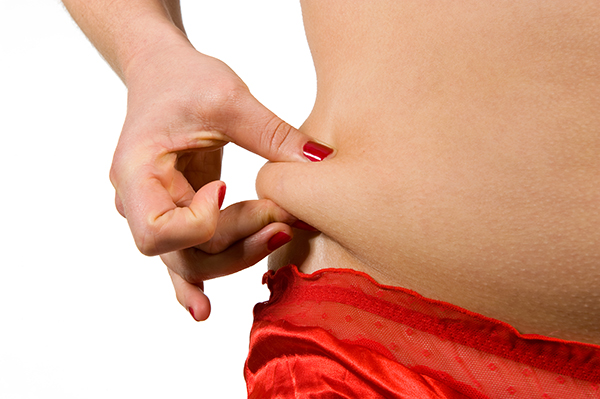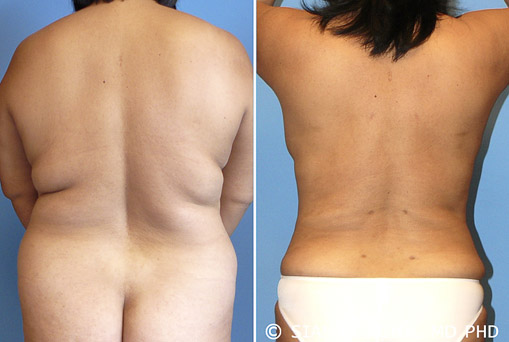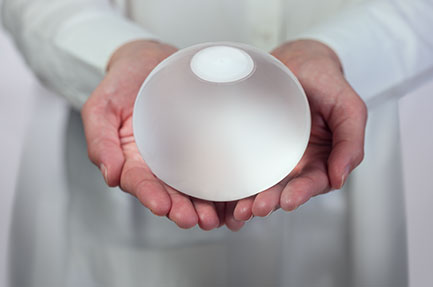We are continually hearing about new invasive and non-invasive plastic surgery techniques for removing fat from our bodies, but how do you know which one is right for you? Or, if you’re even a candidate for any of them?
 Dr. Siamak Agha is one of the country’s most respected authorities in body contouring and post-bariatric plastic surgery. His leading-edge innovations have been remarkable, including development of the revolutionary Body Lift, Abdominoplasty™, Spiral Thigh Lift, and Buttock Reshaping procedures. Dr. Agha has published numerous papers and multiple textbook chapters on basic science, stem cells, aesthetic plastic surgery, and body contouring techniques. Dr. Agha is also a researcher in the field of Molecular and Cell Biology and has a PhD in Gene therapy for University of Cambridge.
Dr. Siamak Agha is one of the country’s most respected authorities in body contouring and post-bariatric plastic surgery. His leading-edge innovations have been remarkable, including development of the revolutionary Body Lift, Abdominoplasty™, Spiral Thigh Lift, and Buttock Reshaping procedures. Dr. Agha has published numerous papers and multiple textbook chapters on basic science, stem cells, aesthetic plastic surgery, and body contouring techniques. Dr. Agha is also a researcher in the field of Molecular and Cell Biology and has a PhD in Gene therapy for University of Cambridge.
I recently had an illuminating conversation with Dr. Agha about plastic surgery and weight loss. Although I live in New York, I’d happily fly across the country to have him work on my body.
![]()
![]()
WHAT ARE THE RULES CONCERNING THE WEIGHTS AT WHICH PATIENTS SHOULD OR CAN HAVE PLASTIC SURGERY?
Let’s say you’re a little overweight, maybe 10 to 15 pounds, and want to have a tummy tuck. Most plastic surgeons will say, ‘OK, go on and lose 20 pounds. Then come back for the procedure.’ My philosophies are a little different. I feel that procedures shouldn’t be done at specific weights, but at the weights at which a person is stable for a long period. Why? If your body functions best with the extra 10 to 15 pounds, you’re better off having the surgery at the higher weight, than struggling to lose it, having the procedure, and ultimately gaining back the 15 pounds, which will affect the results.

Have the procedure at the higher weight. I’ll contour your body for the best outcome for that weight. Let’s say you’re having a tummy tuck, but your flanks are bigger. I’ll do the tummy tuck, as well as lipo on the flanks. That way, you look your best at the weight that you are stable in. If you happen to lose weight after the surgery, that’s okay. In that case, you might develop some skin laxity, and may need just a small touchup to optimize the procedure.
WHAT IF SOMEONE IS STRUGGLING TO LOSE 30 OR MORE POUNDS? SHOULD SHE HAVE PLASTIC SURGERY?
 In cases like this, patients really have to lose the excess weight, which can be done in one of three ways:
In cases like this, patients really have to lose the excess weight, which can be done in one of three ways:
•Proper diet and exercise
•Medical weight loss: A number of new medications have recently been FDA approved (more on this in another interview with Dr. Agha) for medical weight loss
•Weight-loss surgery
Up until now, it was a rather cumbersome and costly procedure if you had to lose 80 or 200 pounds. But recently the FDA has approved use of a gastric balloon, a temporary device that is placed in your stomach for about 6 months to help you lose 40 pounds. It has been used in Europe, Canada and Australia for the last decade, so we know who makes the optimal patient.
WHAT IS THIS BALLOON TECHNIQUE CALLED AND HOW DOES IT WORK?
It’s called Orbera, which fills your stomach with about 600 milliliters of fluid. Think of it like a breast implant that is sitting in your stomach all the time. When you eat you become full quicker. The balloon also slows down gastric emptying so the food sits in the stomach for a longer period and you’re full longer.
The procedure gives you the satiety which will help you to lose weight, but you must use the six months to learn how to change your lifestyle so that you don’t quickly gain the weight back when the balloon is removed. Patients need to be brought back to the office on regular basis to be coached by a dietician and given the tools to change their lifestyles.
The procedure is not dangerous if you’re healthy and in shape.
WHEN YOU GAIN WEIGHT AFTER BODY CONTOURING PROCEDURES, SUCH AS LIPOSUCTION, WHERE DOES THE WEIGHT GO?
Fat cells store fat and you have a fixed number of these cells in your body. Let’s say it’s 100. They don’t multiply or reproduce unless there’s a significant injury, and even in those cases, only a small percentage will reproduce to become fat cells.
So, let’s say we remove half of the abdominal fat cells. Since this is a permanent reduction of fat cells from your abdomen, the remaining fat cells still will expand if you gain weight, but the fat cells in other areas of your body (that haven’t been touched) will also expand and they are greater in number. So fat that normally might go to your abdomen might go to your midriff area, arms or legs since the number of fat cells in those areas are unaltered.
WHAT HAPPENS WITH THE FAT CELLS AFTER FAT TRANSFER?
When you transfer fat cells from one area of your body to another (let’s say to the butt or breasts), they become a permanent part of the fat cell environment in the new region. So, if you gain weight, and you had fat transfer to the butt, it will become even bigger.

![]()
WHEN WE DIET, WHAT DETERMINES WHERE WE’LL LOSE WEIGHT AND AT WHAT RATE?
Your fat cell distribution is genetically predisposed, which means you may have 100 fat cells in your thighs and five in your face. When you’re a lean person, all of these cells are tiny and empty. When you gain weight, each area gains weight according to the number of fat cells it contains, and how these cells act, so if your face has fewer fat cells, the weight won’t show as much.
Fat cells in different areas of the body may actually have different genetics, metabolism rates, and storage capabilities, but we haven’t done enough research in this area to know conclusively.
WHAT IS SOMEONE DIETS TO LOSE 80 POUNDS, HAS BODY CONTOURING, AND THEN GAINS BACK MOST OF THE WEIGHT?
Shame on them!
WHAT TYPES OF PROCEDURES ARE YOUR PATIENTS HAVING?
The body is the new face. A woman will fix up her face, and then say it doesn’t match her body. She’s not comfortable in her body.
I do body lifts on women of normal weight, who have lost their contours as a result of skin laxity from aging, and don’t feel comfortable in their skin anyone. Cultural may play a part. In Brazil, for example, it’s far more common to do body procedures than in the United States because Brazilians show more skin.
•Divorce: Half of the boomer population is divorced. If a 55-year-old woman divorces, and wants to date, she wants to present herself in her ideal shape.
•Sex: Older people are enjoying sex and they want their bodies to look the best they can.
PLEASE TELL US ABOUT THE INVASIVE AND NON-INVASIVE PROCEDURES THAT RELATE TO BODY CONTOURING
Skin laxity (from weight loss or aging) gives you the wrinkles, body contour irregularities, and more. And skin damage, combined with excess fat globules, produce cellulite. My practice is busy because I do procedures to remove the lax skin and sculpt at the same time, making sure incisions are located in the right places.


We do tummy tucks; tummy tucks together with breast lifts; thigh lifts; buttock lifts; liposuction; fat transfer to the buttocks and breasts. Currently, there are no modalities (such as lasers, radio frequency, freezing) to give you acceptable skin reductions and contractions.
There’s a huge market for non-invasive fat reduction procedures, but these aren’t substitutes for liposuction or weight loss. They’re contouring or sculpting treatments.
 I bought the Coolsculpting machine for my Newport Beach mothers who have the tiniest bit of fat. The procedure gives them 35% fat reduction and makes them happy. The most important thing to me is that it works. We’ve been doing Coolsculpting for four years and patients are satisfied.
I bought the Coolsculpting machine for my Newport Beach mothers who have the tiniest bit of fat. The procedure gives them 35% fat reduction and makes them happy. The most important thing to me is that it works. We’ve been doing Coolsculpting for four years and patients are satisfied.
The procedure has to be targeted to one area at a time, such as your lower or upper abdomen, for example, or your flanks.
Ultrashape uses focused ultrasound energy to break fat cells and damage them permanently. The damaged fat cells are then removed by your own white cells, and excreted from your body. Similar to CoolSculpting, the fat is permanently reduced in the treated area.
Vanquish Fat Removal is a radio frequency device that reportedly provides 1 to 13 centimeters of reduction of the waist measurement by destroying the fat cells underneath the skin. Four treatments are recommended. I need to do more research on this, before I decide whether to use it in my practice.
A procedure called SculptSure is hitting the market next year. It is a laser designed to break the fat underneath the skin.
Many new devices are being marketed, that are covering more and more areas of the body, but we won’t see if patients and doctors are happy with them for a few years. I want to make certain that a device sells itself before using it. The literature must says it works; my colleagues must say it works; the science must say it works.
Visit Dr. Agha’s website to learn more about his brilliant work.


